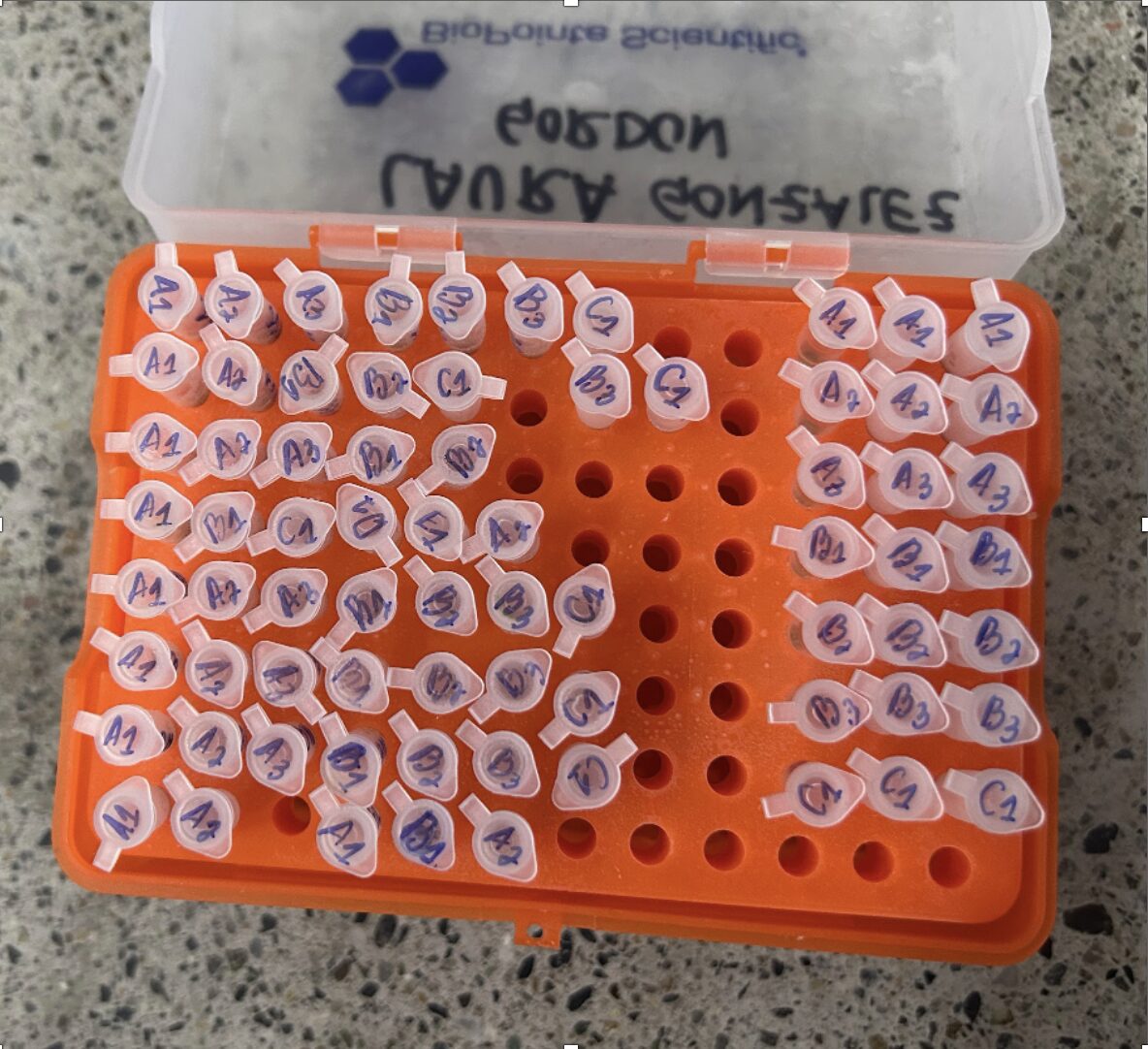Uncovering hidden links between the Indo-Pacific and Malpelo Island: what eagle ray genetics taught us
How it all began
When we first started this project in 2024, we decided to study the spotted eagle ray in Malpelo Island, a vulnerable species that wasn’t well studied in the region, but still plays an important role in the ecosystem. Malpelo Island, located about 500 km off the Colombian Pacific coast, is a remote oceanic sanctuary and UNESCO World Heritage Site known for its incredible marine biodiversity and vast pelagic ecosystems. Despite its global importance, many of the species that inhabit its waters remain scientifically unexplored. These eagle rays are often seen swimming across Malpelo, but little was known, and that mystery was enough to spark our curiosity.
The samples of spotted eagle rays were originally collected in 2018 by Fundación Malpelo y Otros Ecosistemas Marinos during scientific expeditions to the island. Years later, we began the laboratory phase of this project, which includes long days of DNA extractions, amplifications, data analysis and several other steps that require patience and a bit of trial and error before obtaining reliable results, each attempt bringing us closer to uncovering the story hidden in those genetic sequences.

Laura González Gordon performing laboratory procedures for DNA extraction and analysis to genetically evaluate the spotted eagle ray species in Malpelo Island, Colombia. This work contributes to species identification and conservation efforts. Photo © Yenifer Guerrero
A surprising discovery beneath the Pacific Ocean
When we began analysing the genetic samples, we expected to confirm the presence of the Pacific spotted eagle ray, a species widely distributed along the Tropical Eastern Pacific. However, the DNA told us a different story.

PCR products from spotted eagle ray samples collected at Malpelo Island, ready to sequence. Photo © Laura González Gordon
I still remember when the first genetic sequencing results arrived, instead of finding what we were expecting, the data pointed to a different species whose distribution ranges from Indonesia and Japan to Hawaii and the Indian Ocean. It was completely unexpected, and it changed the way we understood what was happening in these waters. Moments like this made us realise the ocean still has so many stories left to tell, and we just happened to uncover one of them.
This means that we have found, for the first time in Colombia, evidence of a new eagle ray complex, suggesting a potential Indo-Pacific connection. This discovery opens new questions about connectivity between the Pacific Ocean basins, the remarkable capacity of these rays to navigate large oceanic distances, and the importance of Malpelo Island as a key connectivity area in the region.
Why this finding matters
Identifying which species inhabit our waters is crucial for designing effective conservation and management strategies, especially in remote marine sanctuaries like Malpelo Island. This finding expands our understanding of species distribution, evolutionary relationships, and connectivity, key elements for protecting not only rays, but also the ecosystems that sustain them.

Spotted eagle ray from Malpelo Island. Photo © Sandra Bessudo Lion | Fundación Malpelo y Otros Ecosistemas Marinos
Reflections from the laboratory
Conducting genetics research is not always easy, but it’s worth every effort. Working in the lab requires patience, precision, and persistence. Each sample, each gel, each sequence, and each data analysis represents a small but vital piece in our research. These results highlight the importance of expanding genetic research in Colombia, and continuing to study and protect these ecosystems. The more we learn, the better we can ensure that species like the spotted eagle ray continue swimming freely through our seas.
